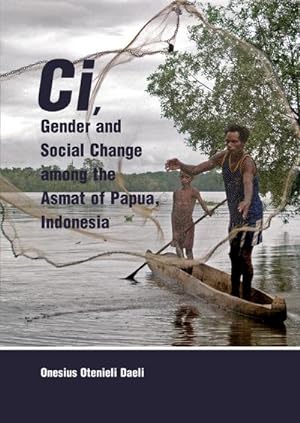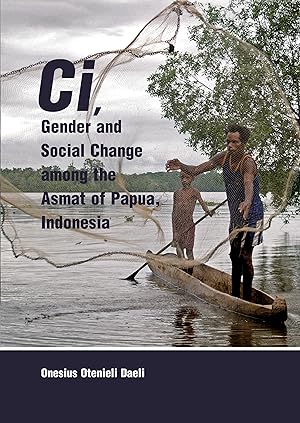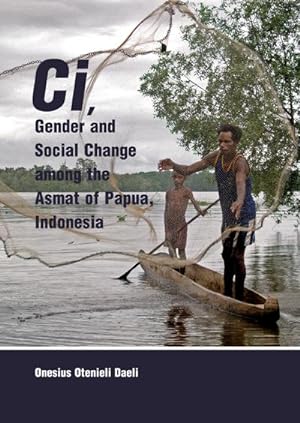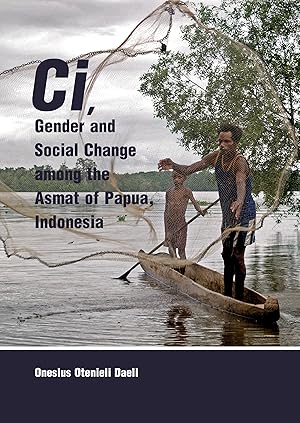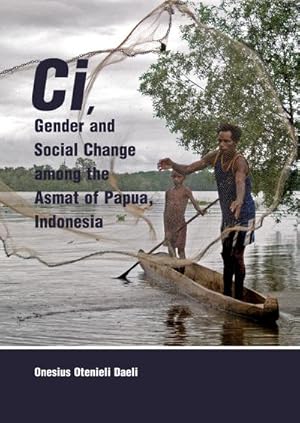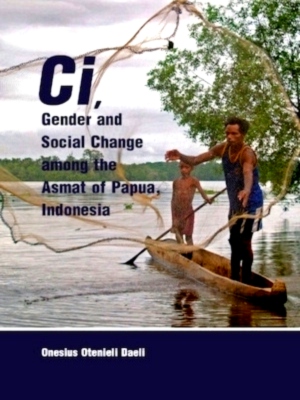daeli onesius otenieli (7 résultats)
Type d'article
- Tous les types de produits
- Livres (7)
- Magazines & Périodiques
- Bandes dessinées
- Partitions de musique
- Art, Affiches et Gravures
- Photographies
- Cartes
- Manuscrits & Papiers anciens
Etat
Reliure
Particularités
- Ed. originale (2)
- Signé
- Jaquette
- Avec images (7)
- Sans impressions à la demande (2)
Livraison gratuite
- Frais de port gratuits USA
Pays
Evaluation du vendeur
-
Ci, Gender and Social Change among the Asmat of Papua, Indonesia
Edité par Sidestone Press, 2020
ISBN 10 : 9088909296ISBN 13 : 9789088909290
Vendeur : AHA-BUCH GmbH, Einbeck, Allemagne
Livre impression à la demande
Taschenbuch. Etat : Neu. nach der Bestellung gedruckt Neuware - Printed after ordering - Ci is the Asmat word for dugout canoe. The ci is an integral part of the everyday life of the Asmat - an ethnic group residing in eastern Indonesia in Papua province (formerly Irian Jaya) - who live in the middle of a huge tidal swampy area. Owning a ci is part of the Asmat's habitus because ci is a guarantee for mobility, both individually and collectively. The ci is essential for the everyday lives of the Asmat. However, the existence of these dugout canoes is now critical as they tend to be replaced by machinery boats.This book uses a very simple piece of material culture, the ci, to introduce readers to the Asmat people and inform them how the Asmat people live. The ci becomes the focal point to understand gender power relations among the Asmat, particularly through social, economic, and spiritual dimensions. This volume is based on an anthropological fieldwork among the Asmat people for many years, and investigates the cultural significances of Asmat's ci by using 'symbolic and interpretive anthropology' as theoretical framework.ContentsForewordAcknowledgmentsTable of contentsList of illustrationsList of acronymsIntroductionI. Asmat: an exotic and nostalgic world1.1 The ci: an Asmat's habitus1.2 Back to Asmat with new eyes1.3 Learning to know, learning to preserve1.4 Story from the field1.5 Scope and limitations1.6 Analytical framework usedII. The ci: a significant key to understand Asmat2.1 Select literature on the Asmat2.2 The ci: the Asmat canoe2.3 Gender power relationsIII. The Asmat: a never ending surprise3.1 Asmat: a pregnant swamp of natural resources3.2 Asmat in Papua province of Indonesia3.3 Asmat: a region that contains no stone3.4 Asmat art: an anamnesis3.5 Defining the Asmat people3.6 Asmat: people of the tree3.7 Warfare and headhunting practices3.8 Some impressions about kinship3.9 Mission 'touch'IV. Physical dimension of the ci4.1 The ci material4.2 Understanding the ci through its sections4.3 Types of ci4.3.1 Pakanam ci4.3.2 Jicap ci or pakman ci4.4 Interpretations of the carvings of the ci4.5 Bottomless ci4.6 Po: the Asmat oarV. Social dimension of the ci5.1 The sociality of the ci5.2 Cisi-ipits - ci maker5.3 The ci owned by the family5.4 The ci triggers conflicts among the Asmat5.5 The dynamics of ci cimen and ci ep5.6 Rowing the ci5.7 Social dimension of the jicap ci5.8 Social dimension of wuramon5.9 Ci as an expression of art5.10 The ci: symbol of masculinity5.11 The ci: a dominant symbol of gender identityVI. Spiritual dimension of the ci6.1 Naming the ci6.2 A distinct ci: wuramonVII. Economic dimension of the ci7.1 Ci opak, jis opak - no ci, no firewood7.2 Ci for men, jouse for women7.3 Power over dusun7.4 Do not call him bitni7.5 One family in one ci7.6 The ci: a key for Asmat economy and festive activityVIII. Continuity and discontinuity in Asmat society8.1 Social change8.2 Water transportation is still needed8.3 Pes (ironwood) and ci nak (ci tree) are in danger8.4 The changed meaning and function of ritual8.5 Carving: not because of inspiration, but because of order8.6 Money-oriented mentality8.7 Asmat nak - the real people8.8 New style of hunting and gathering8.9 The changed concept of gender8.10 Urbanization: dusun and village unmaintained8.11 Marginalization of the Asmat in many aspectsIX. Reflection and conclusion9.1 Reflections as a priest and as researcher in the field9.2 Advantages9.3 Disadvantages9.4 Conclusion9.5 For future researchBibliographyGlossary of terms.
-
Ci, Gender and Social Change among the Asmat of Papua, Indonesia
Edité par Sidestone Press, 2020
ISBN 10 : 9088909296ISBN 13 : 9789088909290
Vendeur : moluna, Greven, Allemagne
Livre impression à la demande
Kartoniert / Broschiert. Etat : New. Dieser Artikel ist ein Print on Demand Artikel und wird nach Ihrer Bestellung fuer Sie gedruckt. This volume is based on an anthropological fieldwork among the Asmat people for many years, and investigates the cultural significances of Asmat s dugout canoes by using symbolic and interpretive anthropology as theoretical framework.Ci is the Asmat w.
-
Ci, Gender and Social Change among the Asmat of Papua, Indonesia
Edité par Sidestone Press Aug 2020, 2020
ISBN 10 : 908890930XISBN 13 : 9789088909306
Vendeur : BuchWeltWeit Ludwig Meier e.K., Bergisch Gladbach, Allemagne
Livre impression à la demande
Buch. Etat : Neu. This item is printed on demand - it takes 3-4 days longer - Neuware -Ci is the Asmat word for dugout canoe. The ci is an integral part of the everyday life of the Asmat - an ethnic group residing in eastern Indonesia in Papua province (formerly Irian Jaya) - who live in the middle of a huge tidal swampy area. Owning a ci is part of the Asmat's habitus because ci is a guarantee for mobility, both individually and collectively. The ci is essential for the everyday lives of the Asmat. However, the existence of these dugout canoes is now critical as they tend to be replaced by machinery boats.This book uses a very simple piece of material culture, the ci, to introduce readers to the Asmat people and inform them how the Asmat people live. The ci becomes the focal point to understand gender power relations among the Asmat, particularly through social, economic, and spiritual dimensions. This volume is based on an anthropological fieldwork among the Asmat people for many years, and investigates the cultural significances of Asmat's ci by using 'symbolic and interpretive anthropology' as theoretical framework.ContentsForewordAcknowledgmentsTable of contentsList of illustrationsList of acronymsIntroductionI. Asmat: an exotic and nostalgic world1.1 The ci: an Asmat's habitus1.2 Back to Asmat with new eyes1.3 Learning to know, learning to preserve1.4 Story from the field1.5 Scope and limitations1.6 Analytical framework usedII. The ci: a significant key to understand Asmat2.1 Select literature on the Asmat2.2 The ci: the Asmat canoe2.3 Gender power relationsIII. The Asmat: a never ending surprise3.1 Asmat: a pregnant swamp of natural resources3.2 Asmat in Papua province of Indonesia3.3 Asmat: a region that contains no stone3.4 Asmat art: an anamnesis3.5 Defining the Asmat people3.6 Asmat: people of the tree3.7 Warfare and headhunting practices3.8 Some impressions about kinship3.9 Mission 'touch'IV. Physical dimension of the ci4.1 The ci material4.2 Understanding the ci through its sections4.3 Types of ci4.3.1 Pakanam ci4.3.2 Jicap ci or pakman ci4.4 Interpretations of the carvings of the ci4.5 Bottomless ci4.6 Po: the Asmat oarV. Social dimension of the ci5.1 The sociality of the ci5.2 Cisi-ipits - ci maker5.3 The ci owned by the family5.4 The ci triggers conflicts among the Asmat5.5 The dynamics of ci cimen and ci ep5.6 Rowing the ci5.7 Social dimension of the jicap ci5.8 Social dimension of wuramon5.9 Ci as an expression of art5.10 The ci: symbol of masculinity5.11 The ci: a dominant symbol of gender identityVI. Spiritual dimension of the ci6.1 Naming the ci6.2 A distinct ci: wuramonVII. Economic dimension of the ci7.1 Ci opak, jis opak - no ci, no firewood7.2 Ci for men, jouse for women7.3 Power over dusun7.4 Do not call him bitni7.5 One family in one ci7.6 The ci: a key for Asmat economy and festive activityVIII. Continuity and discontinuity in Asmat society8.1 Social change8.2 Water transportation is still needed8.3 Pes (ironwood) and ci nak (ci tree) are in danger8.4 The changed meaning and function of ritual8.5 Carving: not because of inspiration, but because of order8.6 Money-oriented mentality8.7 Asmat nak - the real people8.8 New style of hunting and gathering8.9 The changed concept of gender8.10 Urbanization: dusun and village unmaintained8.11 Marginalization of the Asmat in many aspectsIX. Reflection and conclusion9.1 Reflections as a priest and as researcher in the field9.2 Advantages9.3 Disadvantages9.4 Conclusion9.5 For future researchBibliographyGlossary of terms 166 pp. Englisch.
-
Ci, Gender and Social Change among the Asmat of Papua, Indonesia
Edité par Sidestone Press, 2020
ISBN 10 : 908890930XISBN 13 : 9789088909306
Vendeur : moluna, Greven, Allemagne
Livre impression à la demande
Gebunden. Etat : New. Dieser Artikel ist ein Print on Demand Artikel und wird nach Ihrer Bestellung fuer Sie gedruckt. This volume is based on an anthropological fieldwork among the Asmat people for many years, and investigates the cultural significances of Asmat s dugout canoes by using symbolic and interpretive anthropology as theoretical framework.Ci is the Asmat w.
-
Ci, Gender and Social Change among the Asmat of Papua, Indonesia
Edité par Sidestone Press, 2020
ISBN 10 : 908890930XISBN 13 : 9789088909306
Vendeur : AHA-BUCH GmbH, Einbeck, Allemagne
Livre impression à la demande
Buch. Etat : Neu. nach der Bestellung gedruckt Neuware - Printed after ordering - Ci is the Asmat word for dugout canoe. The ci is an integral part of the everyday life of the Asmat - an ethnic group residing in eastern Indonesia in Papua province (formerly Irian Jaya) - who live in the middle of a huge tidal swampy area. Owning a ci is part of the Asmat's habitus because ci is a guarantee for mobility, both individually and collectively. The ci is essential for the everyday lives of the Asmat. However, the existence of these dugout canoes is now critical as they tend to be replaced by machinery boats.This book uses a very simple piece of material culture, the ci, to introduce readers to the Asmat people and inform them how the Asmat people live. The ci becomes the focal point to understand gender power relations among the Asmat, particularly through social, economic, and spiritual dimensions. This volume is based on an anthropological fieldwork among the Asmat people for many years, and investigates the cultural significances of Asmat's ci by using 'symbolic and interpretive anthropology' as theoretical framework.ContentsForewordAcknowledgmentsTable of contentsList of illustrationsList of acronymsIntroductionI. Asmat: an exotic and nostalgic world1.1 The ci: an Asmat's habitus1.2 Back to Asmat with new eyes1.3 Learning to know, learning to preserve1.4 Story from the field1.5 Scope and limitations1.6 Analytical framework usedII. The ci: a significant key to understand Asmat2.1 Select literature on the Asmat2.2 The ci: the Asmat canoe2.3 Gender power relationsIII. The Asmat: a never ending surprise3.1 Asmat: a pregnant swamp of natural resources3.2 Asmat in Papua province of Indonesia3.3 Asmat: a region that contains no stone3.4 Asmat art: an anamnesis3.5 Defining the Asmat people3.6 Asmat: people of the tree3.7 Warfare and headhunting practices3.8 Some impressions about kinship3.9 Mission 'touch'IV. Physical dimension of the ci4.1 The ci material4.2 Understanding the ci through its sections4.3 Types of ci4.3.1 Pakanam ci4.3.2 Jicap ci or pakman ci4.4 Interpretations of the carvings of the ci4.5 Bottomless ci4.6 Po: the Asmat oarV. Social dimension of the ci5.1 The sociality of the ci5.2 Cisi-ipits - ci maker5.3 The ci owned by the family5.4 The ci triggers conflicts among the Asmat5.5 The dynamics of ci cimen and ci ep5.6 Rowing the ci5.7 Social dimension of the jicap ci5.8 Social dimension of wuramon5.9 Ci as an expression of art5.10 The ci: symbol of masculinity5.11 The ci: a dominant symbol of gender identityVI. Spiritual dimension of the ci6.1 Naming the ci6.2 A distinct ci: wuramonVII. Economic dimension of the ci7.1 Ci opak, jis opak - no ci, no firewood7.2 Ci for men, jouse for women7.3 Power over dusun7.4 Do not call him bitni7.5 One family in one ci7.6 The ci: a key for Asmat economy and festive activityVIII. Continuity and discontinuity in Asmat society8.1 Social change8.2 Water transportation is still needed8.3 Pes (ironwood) and ci nak (ci tree) are in danger8.4 The changed meaning and function of ritual8.5 Carving: not because of inspiration, but because of order8.6 Money-oriented mentality8.7 Asmat nak - the real people8.8 New style of hunting and gathering8.9 The changed concept of gender8.10 Urbanization: dusun and village unmaintained8.11 Marginalization of the Asmat in many aspectsIX. Reflection and conclusion9.1 Reflections as a priest and as researcher in the field9.2 Advantages9.3 Disadvantages9.4 Conclusion9.5 For future researchBibliographyGlossary of terms.
-
Ci, Gender and Social Change among the Asmat of Papua, Indonesia Special Collection
Edité par Sidestone Press, 2020
Vendeur : Collectors' Bookstore, Antwerpen, Belgique
Livre Edition originale
Paperback. Etat : Fine. First Edition. First Edition thus. Ci, Gender and Social Change among the Asmat of Papua, Indonesia Special Collection by Onesius Otenieli Daeli. Published by Sidestone Press in 2020. Paperback. What makes this title so special is its limited availability. - Publishers Weekly. Collectible item in very fine condition.
-
Ci, Gender and Social Change among the Asmat of Papua, Indonesia Special Collection
Edité par Sidestone Press, 2020
Vendeur : Collectors' Bookstore, Antwerpen, Belgique
Livre Edition originale
Hardcover. Etat : Fine. First Edition. First Edition thus. Ci, Gender and Social Change among the Asmat of Papua, Indonesia Special Collection by Onesius Otenieli Daeli. Published by Sidestone Press in 2020. Hardcover. What makes this title so special is its limited availability. - Publishers Weekly. Collectible item in very fine condition.


